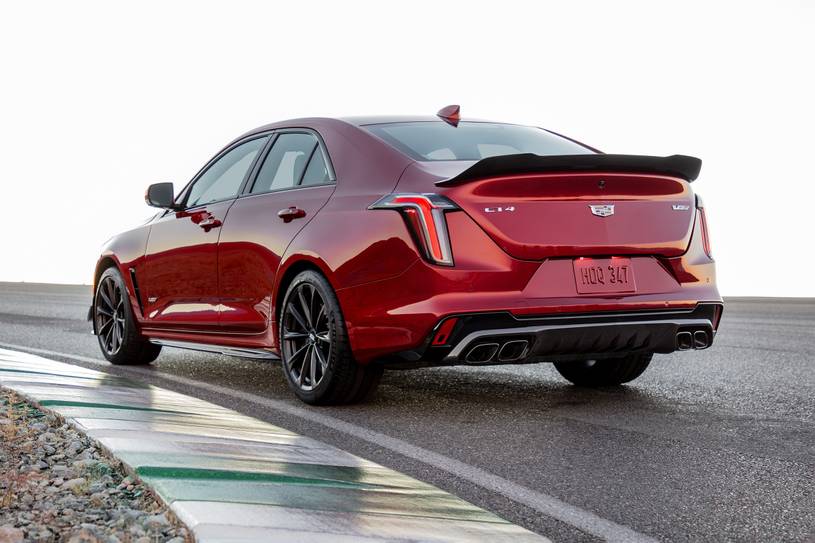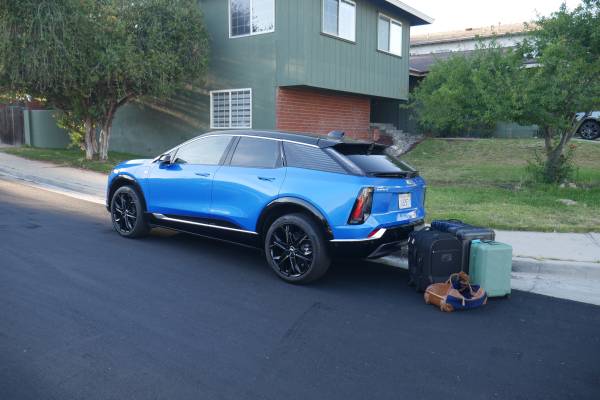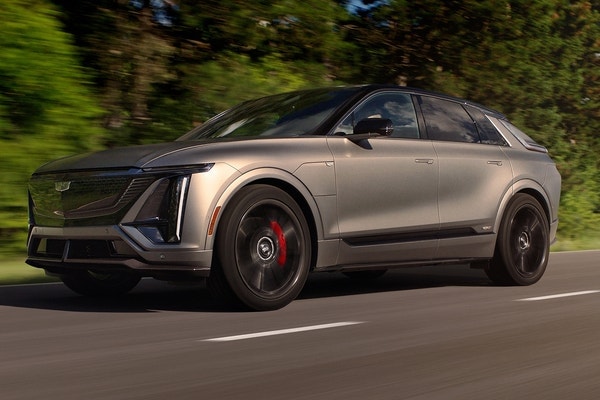The CT4-V Blackwing has a twin-turbo 3.6-liter V6 with 472 horsepower and 445 lb-ft of torque. When equipped with the 10-speed automatic transmission, Cadillac claims the Blackwing can rip from 0 to 60 mph in 3.9 seconds, which is similar to the M3 and C 63. You can expect slower acceleration from the standard six-speed manual transmission, but far more fun. The manual has a no-lift feature that allows you to keep the gas pedal pinned during a full-throttle upshift without fear of damaging the driveline. Doing so also keeps the turbos spooled, improving acceleration.
When the Blackwing is set to Track mode, the exhaust pops and backfires when you lift off the gas pedal, and it emits an aggressive burble when you slow down in gear. While the power delivery is robust through the rev range, the V6 sound isn't as appealing as what the M3's turbocharged inline-six or the Mercedes' turbocharged V8 emits. It's too bad Cadillac didn't go with a version of the 6.2-liter V8 in the Chevrolet Camaro instead of this turbo V6 — the two produce similar power but the V8 has a more rousing soundtrack.
Past the thrust from the turbo V6 engine, large Brembo brakes and sticky Michelin tires, the Blackwing's sophisticated electronic controls provide both a high degree of confidence on a racetrack and comfortable cruising on country roads.
The Blackwing is able to understand what you're asking from each tire and adjust various parts of the car to make it happen, from the suspension dampers to the differential and so on. For example, let's say you upshift the automatic transmission when you're midcorner. In a different car, that change in power and rpm could upset the car's traction. But the Blackwing's computer considers how much grip is available and slows the speed of the shift accordingly to ensure you don't lose traction.
From these kinds of controls emerges a confidence that encourages you to try braking later, take turns at higher speeds, and apply the gas pedal sooner. As with many modern performance cars, drivers can even fine-tune the car's behavior, from steering effort to suspension firmness to brake pedal response to exhaust volume.








